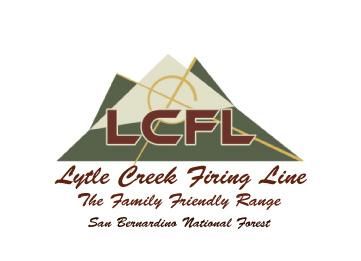How Cancer Increases the Risks of Slipping and Falling
- Home
- Journal
- Service Related Cancer
- How Cancer Increases the Risks of Slipping and Falling
There is a two-fold increased risk of falls among community-dwelling older adults without cancer and even a higher fall risk among cancer victims. Cancer is a disease that affects millions of people around the world. While many people are aware of the physical symptoms of cancer, such as fatigue, pain, and nausea, they may not know that cancer can also increase the risk of slipping and falling, especially in older adults with cancer. In this article, we will explore the ways in which cancer can affect balance and coordination and increase fall risk. We will also talk about how elderly cancer patients treated for cancer have a far higher fall risk and risk factors for slipping, tripping, and falling. This article is dedicated to cancer survivors and all those at higher falls risk of falling after a cancer diagnosis.
Cancer Treatment Side Effects
Many cancer treatments, such as chemotherapy and radiation therapy, can cause side effects, making them at a higher risk for balance and coordination problems (Ex: chemotherapy-induced peripheral neuropathy). These side effects can include an increased risk for fall-related injuries due to weakness, dizziness, and numbness in the feet and hands, making it more difficult to maintain balance while walking. This increased risk factor for fall injuries is especially true with older cancer patients with bone weakness and lost physical function from radiation therapy.
Bone Health
As many adult cancer survivors will tell you, cancer will not only affect physical performance. Cancer can also affect bone health, especially in patients with bone cancer or cancer that has spread to the bones. Weak bones can increase the risk of fractures, making walking more difficult without falling. Older cancer survivors living today still will report a greater risk of broken bones during injurious falls or if they bump into an object.
Muscle Weakness and Falls Risk Factors
Cancer can cause muscle weakness, especially in patients undergoing treatment or advanced disease stages. Weak muscles can make it more difficult to maintain balance and walk without falling or even predict falls or percent falls, for that matter. Cancer symptoms alone can throw you off balance in your already aging group. Of course, this can increase the risk of head trauma from banging your head, especially in elderly persons, as noted above. Physical therapy is often recommended as part of an overall fall prevention regime.
Fatigue and Cancer Patients
Cancer-related fatigue is a common symptom that can affect patients’ energy levels and ability to move around. Fatigue can make it more difficult to stay alert and aware of one’s surroundings, increasing the risk of tripping and falling.
Neuropathy Fall Risk
Neuropathy is a condition that affects the nerves and can cause symptoms such as numbness, tingling, and weakness in the hands and feet. Cancer treatment can cause neuropathy, which can make it more difficult to feel one’s feet on the ground and increase the risk of slipping and falling.
Cognitive Function
Cancer and cancer treatment can affect cognitive function, making paying attention and processing information more difficult. This can make it more difficult to navigate one’s surroundings and avoid tripping hazards. Sometimes dementia plays a role, which is why a consultation with a doctor or specialized physicians is so important in understanding associated problems in nursing like history of falls, orthostatic hypotension and even incontinence. You should also look at assistive devices and medication to decrease risk of falls to help with impaired balance in daily living.
Emotional Distress
Cancer can cause emotional distress, such as anxiety and depression, which can affect one’s ability to stay alert and focused. This can increase the risk of falls, especially in older adults who are already at risk for falling.
Medications
Some medications used to treat cancer or manage cancer-related symptoms can cause side effects that affect balance and coordination. For example, opioids can cause drowsiness and dizziness, making it more difficult to walk without falling.
Changes in Vision
Cancer can affect vision, especially in patients with eye cancer or cancer that has spread to the eyes. Changes in vision can make it more difficult to see obstacles or hazards in one’s path, increasing the risk of falls.
Dehydration
Cancer and cancer treatment can cause dehydration, which can affect balance and coordination. Dehydration can cause dizziness and lightheadedness, making it more difficult to maintain balance while walking.
Mobility Aids
Some cancer patients may require mobility aids, such as canes or walkers, to assist with balance and coordination. However, if these aids are not used properly or adjusted correctly, they can increase the risk of falls.
Lack of Exercise
Cancer and cancer treatment can cause patients to become less active, which can lead to muscle weakness and loss of balance. Lack of exercise can also cause weight gain, which can make it more difficult to maintain balance while walking.
Pre-existing Conditions
Some cancer patients may have pre-existing conditions that increase the risk of falling, such as arthritis or osteoporosis. Cancer treatment can exacerbate these conditions, increasing the risk of falls and fractures.
Conclusion
While cancer can affect many aspects of a person’s life, it’s important to be aware of the ways in which it can increase the risk of slipping and falling. The Cancer and Aging Research Group fall score also explains some factors associated with prior falls in older adults with cancer. Cancer treatment side effects, bone health, muscle weakness, fatigue, neuropathy, cognitive function, emotional distress, medications, changes in vision (adverse drug reactions, etc.), dehydration, mobility aids, lack of exercise, and pre-existing conditions with physical function are all factors that can contribute to falls in cancer patients.
It’s important for cancer patients and their caregivers to take steps to reduce the risk of falls, such as keeping the home free of hazards, using mobility aids properly, staying hydrated, and getting regular exercise. We recommend a risk assessment and comprehensive geriatric assessment for older patients in the general population. By being aware of these statistically significant risks and taking steps to prevent falls, cancer patients can reduce their risk of injury and maintain their quality of life. Preventing injuries falls risk factors is something patient safety should require among older adults and those suffering cancer epidemiology disability.
References:
Bower JE, Bak K, Berger A, et al. Screening, assessment, and management of fatigue in adult survivors of cancer: an American Society of Clinical Oncology clinical practice guideline adaptation. J Clin Oncol . 2014;32(17):1840-1850. Campbell G, Wolfe RA, Klem ML. Risk factors for falls in adult cancer survivors: An integrative review. Rehab Nurs . 2018;43(4):201-213. Guerard EJ, Allison MD, et al. Incident report form Case–control study – delirium – neuroleptics 7 O’Connell et al ., 2005, Australia Hospitalized patients with cancer 34/193 Medical records Cohort study – age – ECOG scale – muscle strength – self-rated fatigue score 6 NOS, Newcastle–Ottawa Scale; ECOG: Eastern Cooperative Oncology Group.
Resources
General Stuff
Address
Paul Ehline Ehline Memorial Ride
3838 W Carson St.
Torrance, CA 90503
Phone : (310) 622-8719
© paulehlineride.org. All rights reserved.
Donations submitted through donation forms on PaulEhlineRide.Org are tax-deductible to the fullest extent allowed by U.S. and state laws. These will be in U.S. Federal Reserve Notes. Paul Ehline Memorial Ride™ is a U.S. nonprofit, tax-exempt charitable Section 501(c)(19) organization that benefits US Armed Forces veterans under the U.S. Internal Revenue Code. (Tax identification number 85-4040563.)





